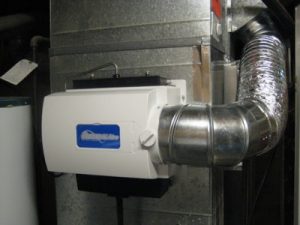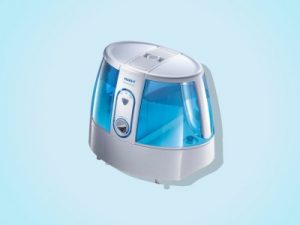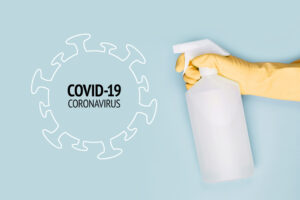
In case you don’t know it, humidity can exacerbate dust allergy. Many people don’t know it until they experience allergy symptoms. Dust mites are present in many homes all over the world. These are microscopic creatures not seen by the naked eyes. Dust mites evolve together with humans and clean up after them, feeding on dead skin flakes.
You might not find it pleasant to imagine or think about but there are probably thousands of dust mites living inside the house with you. These are commonly present in the air as well as in your carpets, couches, and beds.
Does low humidity kill dust mites? Yes, most dust mites can die in low levels of humidity or extreme temperatures. However, they will leave their wastes and dead bodies behind. These can then continue to cause some allergic reactions. Dust mites can even survive throughout the year in humid and warm homes.
Types of Dust Mites
There are two primary kinds of dust mites, namely Dermatophagoides pteronyssinus and Dermatophagoides farina or also known as the European and American dust mites. Dust mites don’t really cause health issues in most people.
Humans have lived together with dust mites for years with no problems and it was only until recently when people started to develop allergies and sensitivities to these creatures. Both dust mite species can irritate the skin and respiratory systems.
Some of the common symptoms of allergies they provoke include the following:
- Rashes
- Asthma
- Rhinitis
- Conjunctivitis
- Fatigue because of lack of sleep
- Persistent cough
How Low Humidity Kills Dust Mites
Humidity refers to the measurement of the air’s moisture content. Since dust mites don’t drink water, they need to absorb the air moisture to their bodies.
This means that humidity is one crucial factor with a big impact on the dust mite population. If the air doesn’t have excess moisture, dust mites won’t be able to survive. This is among the many reasons why dust mites love your bed because it gives them warmth, sweat, and food.
Studies reveal that the lowest levels of humidity where dust mites can continue to survive and thrive is 55% to 74% with temperatures of 59 to 95 degrees Fahrenheit. Once the levels of humidity go lower than 55%, dust mites are going to dehydrate and die soon. In high desert regions, there is little precipitation and little humidity, which means that dust mites won’t be able to survive in such places.
For this reason, dust mites also came up with strategies to live a longer life during dry periods. For instance, they group together to conserve moisture. There are times when they can withstand low humidity levels for extended periods of time.
Air conditioning and heaters can also influence the survival of dust mites since these can make the air dry. Air conditioning and heaters can also worsen allergies in homes as they stir up allergies and circulate them all over the house.
However, dust mites are going to thrive when there is high humidity. They tend to reproduce fast when given the right conditions.
Conditions are usually at their best during summer months. The best conditions where dust mites can thrive include:
- Warmth – this makes summer the perfect season
- Humidity – moist air for absorbing water
- Food – carpets, room corners, beds, sleeping areas of pets
- Hiding place – rugs, beds, couches, carpets
If your home has all of these conditions, it is safe to assume that they will thrive. If members of your family don’t have allergies, you don’t have to worry.
If your kids have allergies, watch out for signs such as sneezing early morning, itchy skin and eyes, allergic shiners, sinus congestion, and morning cough.
These allergy symptoms usually become normal for both children and adults, thus leaving them untreated.
Dust Mites and Dehumidifiers
Studies have discovered that the use of dehumidifiers can help maintain relative humidity levels at less than 50% that will thereby reduce populations of dust mites. Dehumidifiers usually come in handy during humid summer months.
A dehumidifier can effectively eliminate moisture from the air and help dry out those damp spots around the house. In houses with basements, dehumidifiers are especially useful.
There are several types of dehumidifiers you can find in the market right now. Some of them are large enough, perfect for the entire home. Others are exclusively meant for individual rooms like the bedroom. Dehumidifiers feature a filter, a basin for water collection, and an area for air intake.
Most dehumidifiers also come with a drain hose that you can place in the sink to allow continuous drainage. A hose will reduce the need to constantly empty out water from the basin.
A high-quality dehumidifier also comes with a digital display that will measure relative humidity and turn on or off according to the specific settings you choose.
Ventilate Your Household to Lower Humidity and Kill Dust Mites
A good practice you can try to lower the levels of moisture and circulate clean fresh air around the house is to open windows to increase sunlight and airflow. Sunlight heat has a unique drying effect.
If it is impossible to open windows because of other allergies, heating and air conditioning will also help. If you need central heating and air, don’t forget to use quality air filters.
Most people usually settle for the cheapest filters because they assume that all of them are just the same. However, high-quality air filters can better capture not only dust mites but also odors, smoke, dander, and pollen. These might be a bit pricier but the quality of indoor air is very important, especially for people with allergies.
Eliminating dust mites in your home is a serious challenge, with high humidity increasing their population. Learning how to lower humidity with the use of dehumidifiers combined with proper air circulation and ventilation will help you reduce symptoms of dust mite allergies.
Make sure you also keep your home clean to ensure that dust mites won’t have any food sources.






































